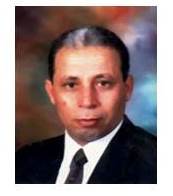The root tip of a germinating seed is usually the first organ of a plant to contact possible herbicide residues in the soil. Therefore, we examined electron microscopically the responses of the root caps of very young seedlings of Pisum sativum, Phaseolus vulgaris and Vicia faba to low concentrations of three frequently used herbicides, chlorsulfuron, norflurazon and triallate. Additionally, herbicide-induced increase of proline content and growth response of the roots were determined. All three herbicides caused changes in root cap ultrastructure; the outermost cell layer of the secretory tissue was destroyed, and the sloughing of cells from the root cap periphery was inhibited. Moreover, chlorsulfuron damaged amyloplasts in statocytes. Root growth was reduced by all three herbicides, but mostly by chlorsulfuron. The increase in proline content was highest in Pisum and Vicia after chlorsulfuron treatment, whereas
Total citations

